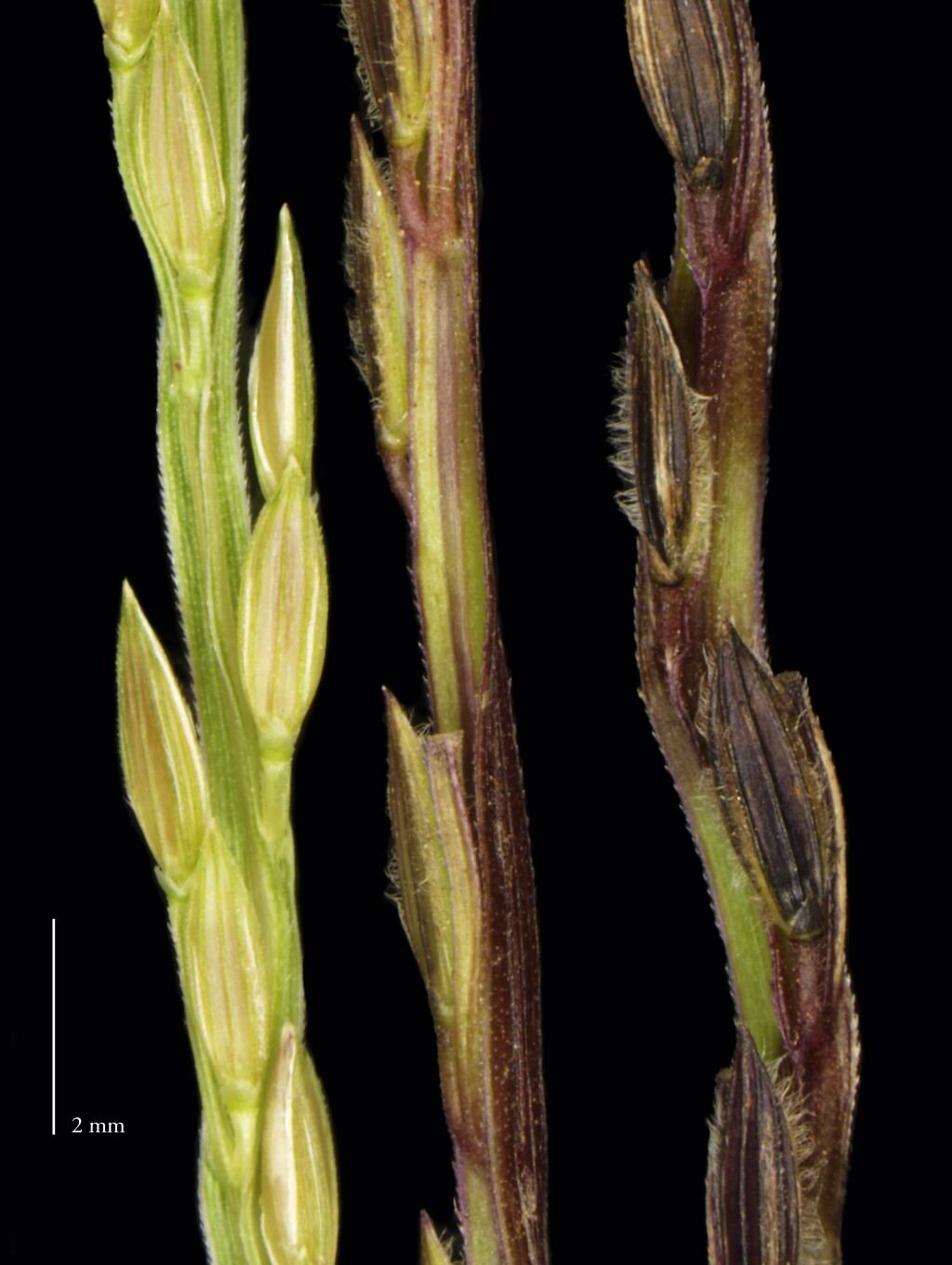Digitaria sanguinalis
(L.) Scop. Summer GrassTufted annual. Culms usually decumbent at base, to 60 cm high. Leaves variably pilose; blade mostly flat, 3–15 cm long, 2–15 mm wide, often purplish; ligule obtuse, 0.5–2.5 mm long. Panicle of 3–11, narrowly winged, one-sided, spike-like racemes 5–15 cm long, digitately arranged or slightly separated. Spikelets acute, 2.6–3.2 mm long, mostly paired, on unequal pedicels, the longer pedicel to c. 3.5 mm long; lower glume vestigial, to 0.4 mm long; upper glume 3-nerved, c. 1–1.5 mm long; lower lemma 5–7-nerved, as long as the spikelet or slightly shorter, glabrous or ciliate, scabrous along the nerves; palea of lower floret vestigial or absent; lemma of upper (bisexual) floret acute, equal to spikelet, dorsally rounded, finely striate, brown or purplish at maturity. Flowers Dec.–Jun.
LoM, MuM, Wim, GleP, VVP, VRiv, RobP, MuF, GipP, OtP, WaP, Gold, CVU, GGr, DunT, NIS, EGL, EGU, HSF, HNF, OtR, Strz. All States except NT. Native to southern Europe and Asia and perhaps northern Australia, naturalised in southern Australia, widely naturalised in other countries. Except for the cooler high country, occurs almost throughout Victoria, inhabiting disturbed soil on roadsides, river margins and, particularly, irrigated domestic and commercial gardens, growing prolifically during summer and early autumn.
Digitaria ciliaris (Retz) Koeler is represented at MEL by 2 collections: 1 a cultivated specimen from Hawkesdale near Warrnambool collected in 1903, and the other from Leitchville near Cohuna, collected in 1914. This native tropical or subtropical species is not otherwise known from Victoria but occurs as a weedy annual in most other States. It is exceedingly close to D. sanguinalis and sometimes included within this species as a variety. It differs primarily in having smooth, not scabrous nerves on the lower lemma and in the glabrous to very sparsely hairy leaf-blades.
Walsh, N.G. (1994). Poaceae. In: Walsh, N.G.; Entwisle, T.J., Flora of Victoria Vol. 2, Ferns and Allied Plants, Conifers and Monocotyledons, pp. 356–627. Inkata Press, Melbourne.
 Spinning
Spinning



